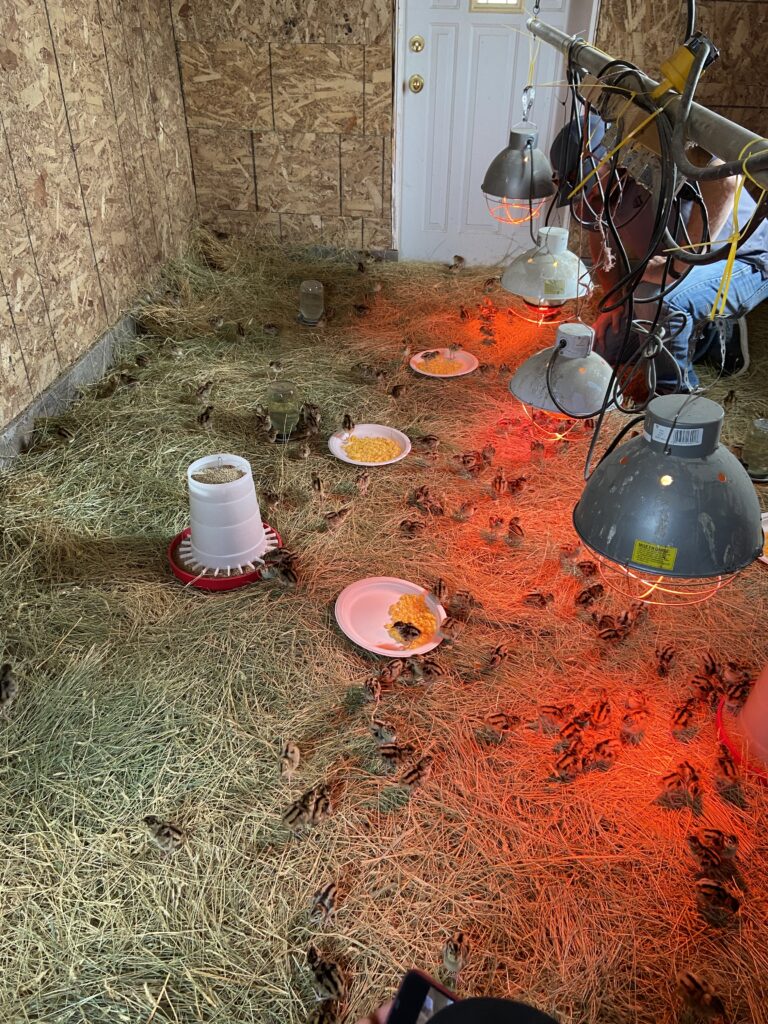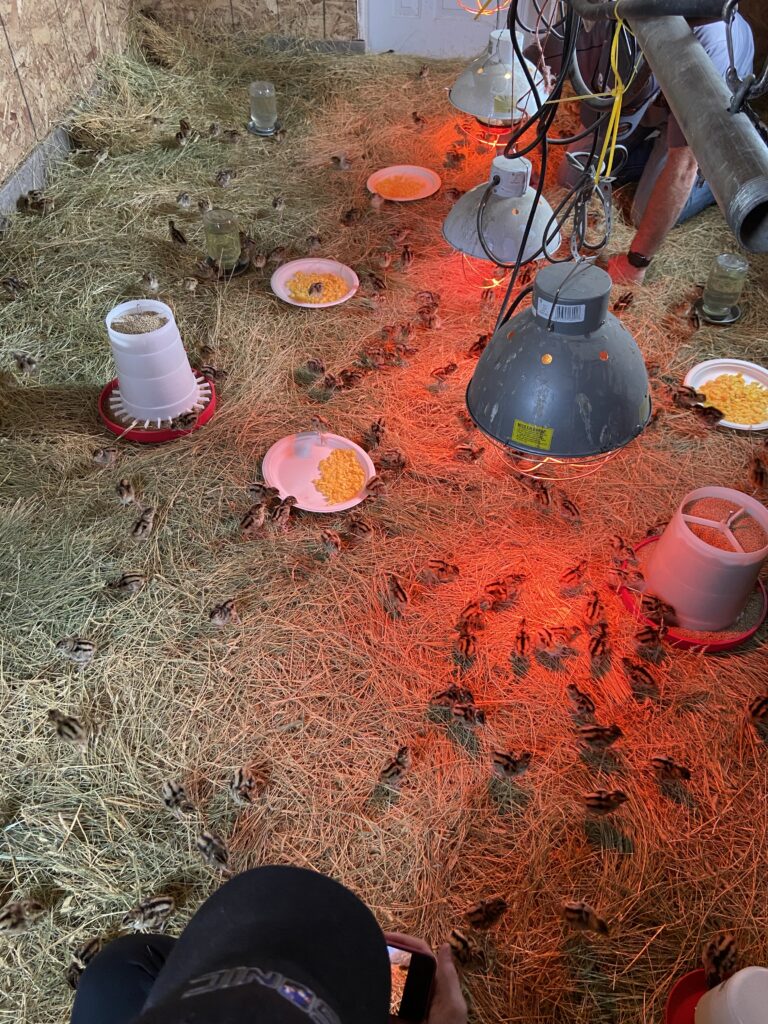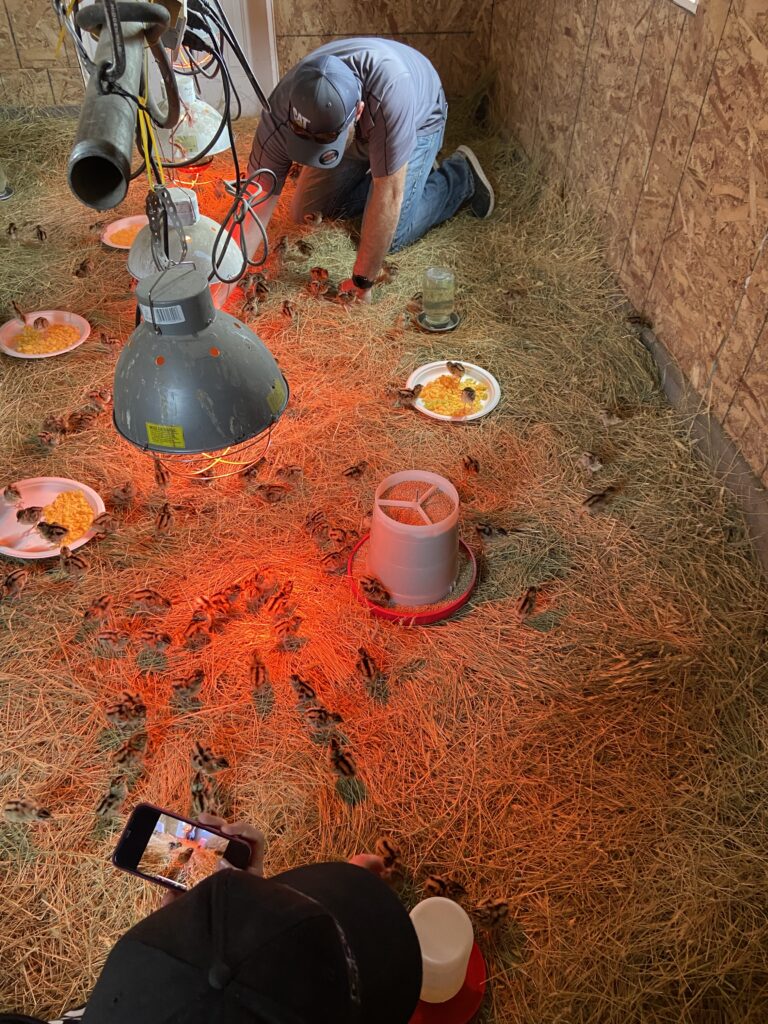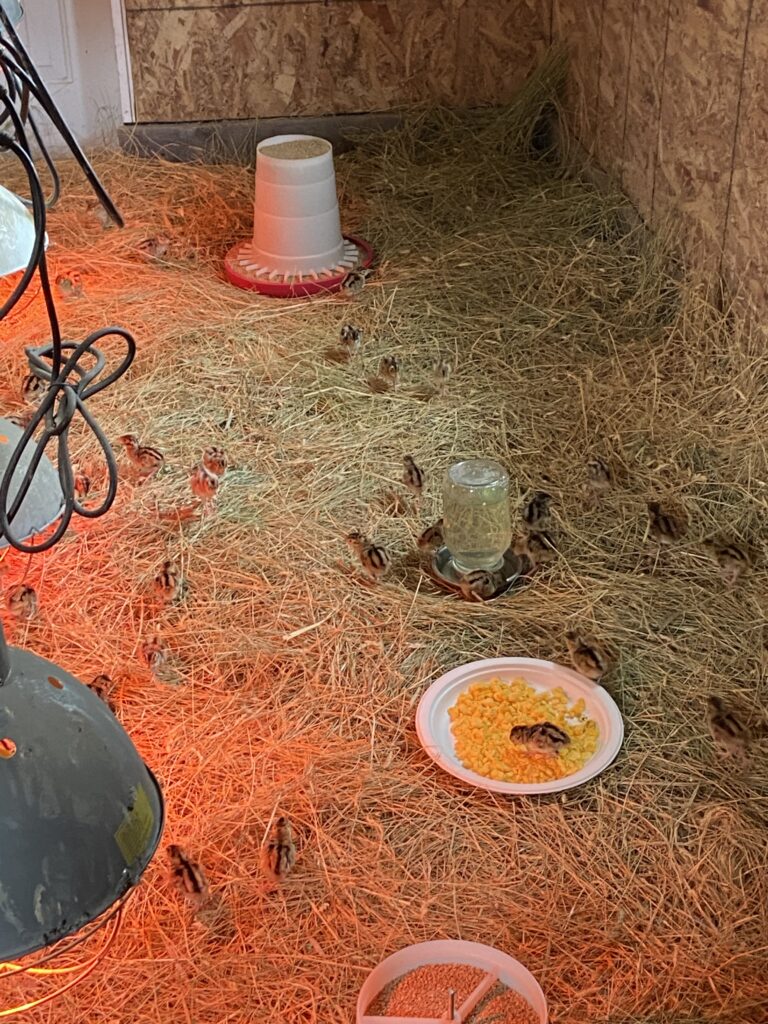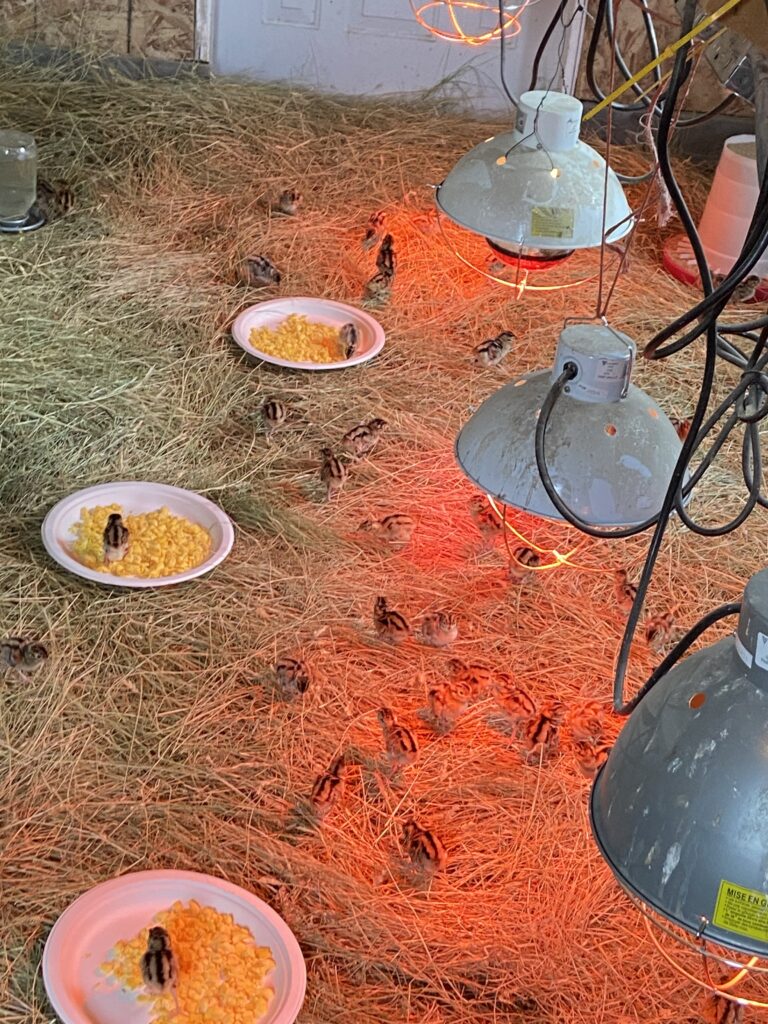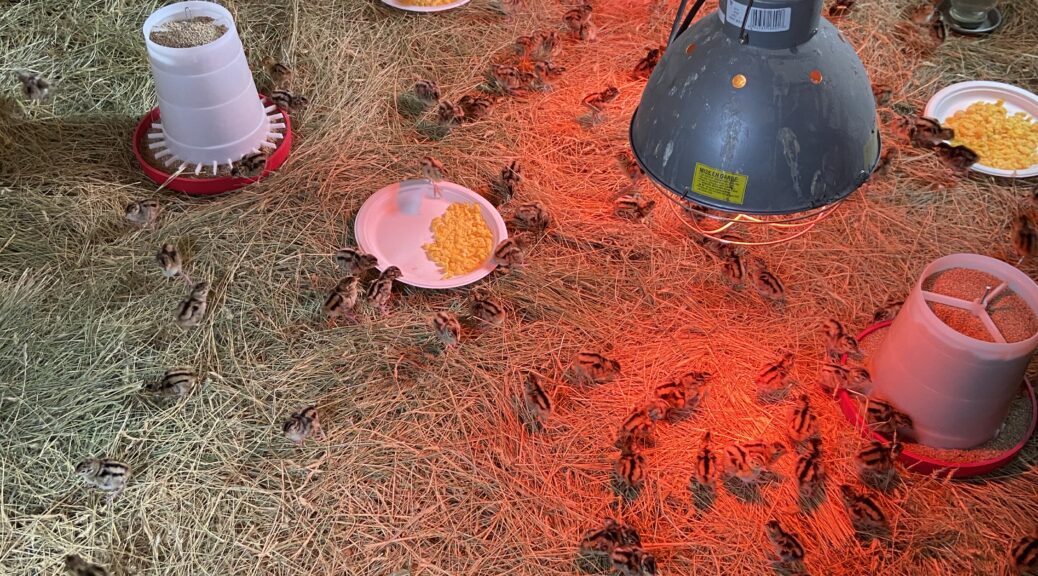
Raymond 4H Pheasant Raise and Release Project
A letter from the Raymond 4H Club.
In our Pheasant Project for Raymond Multi Club, we raise day-old pheasant chicks purchased bythe Alberta Conservation Association (ACA) from McFarlane Farms in Janesville, Wisconsin. To prepare for their arrival we have to build a brooder house, that willkeep them warm and dry with appropriate heat lamps and bedding. They don’t use it right away, but we also prepare and build a transition flight pen and a large flight pen so they can have lots of space to grow and get accustomed to the outside environment. In the flight pen, we build a lot of hiding places, like A- frames, straw or hay bales, plant tall grass, shrubs, trees and branches etc.
Right before their arrival, we get the coop all set up with chick waterers, and food as well as warm up the coop. Turning on the heat lamps a day or so before delivery allows us to get the appropriate ground temperature for new chicks at around 37.8 degrees Celsius – which we gradually reduce to 35 degrees over the first few days. We have to check the temperature multiple times a day to ensure that they are comfortable. The chicks will tell you if they are too hot or too cold. If they are too hot the chicks spread out far and get droopy-looking, if they are too cold they huddle in groups right under the lamps and possibly squish each other.
We usually get about a week or two notice that the chicks are coming, typically sometime
between the End of April to mid-May. We pre-heat our vehicles for picking up the chicks so the
car is nice and warm for the drive home. The chicks we receive are usually a 10:1 ratio of hens to
roosters. After a steamy drive home, we take them into the brooder house and take time to
individually take them out one by one to count them, look them over for health/quality, and dip
their beaks in water to give them a drink and perk them up after their long drive. We add some
electrolytes to the water and give them some scrambled eggs for extra protein to boost them up.
The chicks eat Turkey Starter for the first 5-6 weeks and then we transition them to Turkey Grower, adding in some other grains as they get bigger. We have to track their mortality rates throughout the project and keep notes about their daily progress for the first 2 weeks, and then weekly until the project ends. We monitor and lower temperatures over time until they are old enough to go outside into a transition pen during the day and they will be put in the brooder house at night around 6-8 weeks. Usually around 8 weeks, they will be locked outside to help acclimate them to the environment before release.
As they get bigger they often peck each other and if they see blood they will kill each other, to
avoid this there are a few things we can do. We can feed them more protein with scrambled eggs
and/or bugs, make more hiding places in their enclosure, put beak bits on them, put apple cider
vinegar in their water, and/or provide ways to keep them busy like hanging lettuce up for them to
peck at. The goal of our Pheasant Project is to keep them alive and healthy! Not only do we do
our best to keep them from hurting each other, but we also have to protect them from predators.
Predator-proofing our flight pens and enclosures is important and ongoing.
We have had many predators try to break into our flight pens, sometimes they are successful and we learn through that how to improve our setup. Animals in our area that like to eat pheasants are; owls, dogs, cats, coyotes, raccoons, foxes, hawks, magpies, weasels and skunks. Some ways that we predator-proof our enclosures are by burying wire under the ground to prevent digging, installing wire around the outside perimeter, predator spikes on ledges, electric fences, and a sturdy flight pen netting.
Sincerely,
Raymond 4H Multi Club – Pheasant Project Members 2024
Abigail Geishbrecht, Alora Skoog, Jaxon Caldwell, Juniper Cocks and Nate Nelson
